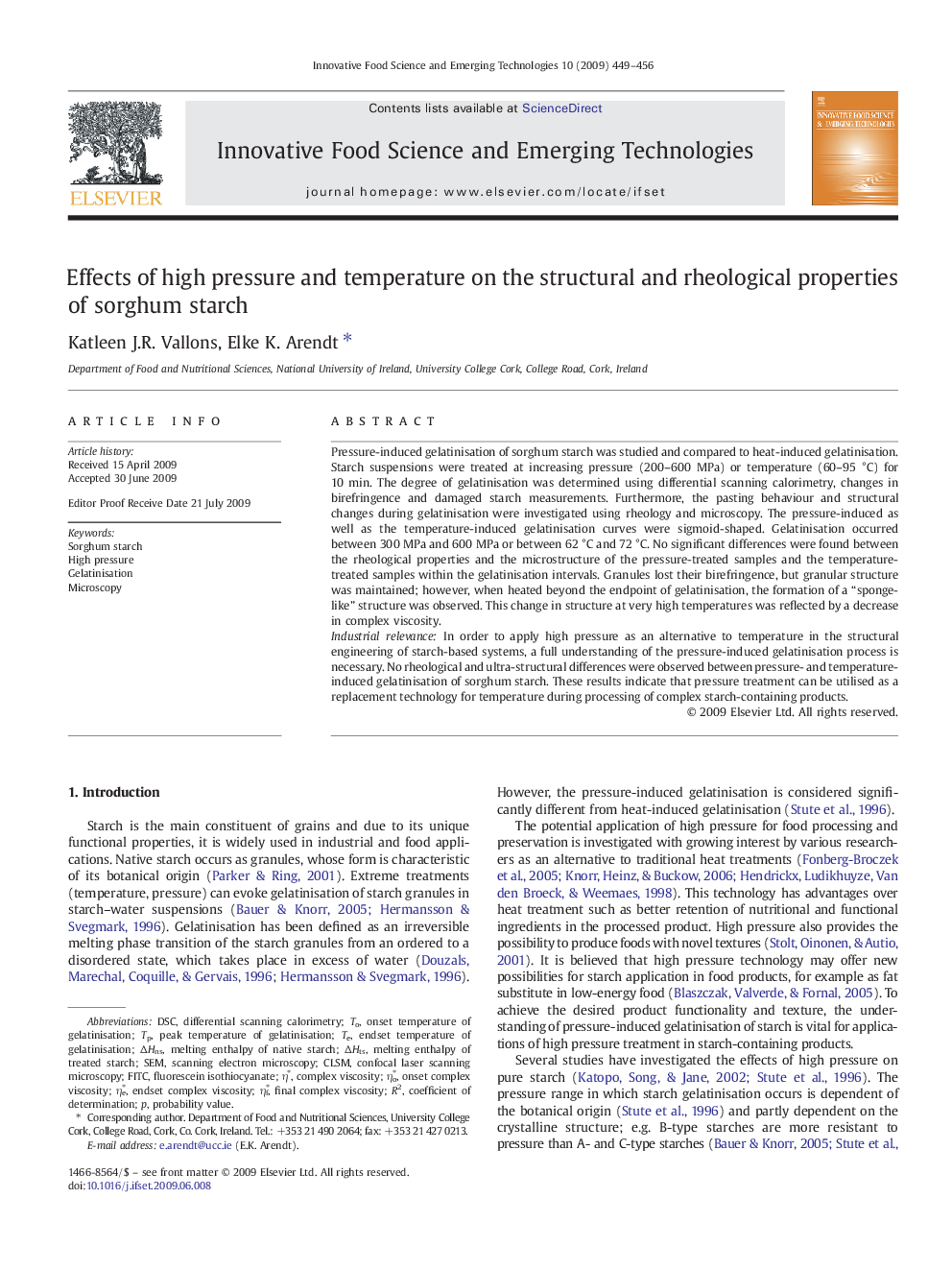| Article ID | Journal | Published Year | Pages | File Type |
|---|---|---|---|---|
| 2087054 | Innovative Food Science & Emerging Technologies | 2009 | 8 Pages |
Pressure-induced gelatinisation of sorghum starch was studied and compared to heat-induced gelatinisation. Starch suspensions were treated at increasing pressure (200–600 MPa) or temperature (60–95 °C) for 10 min. The degree of gelatinisation was determined using differential scanning calorimetry, changes in birefringence and damaged starch measurements. Furthermore, the pasting behaviour and structural changes during gelatinisation were investigated using rheology and microscopy. The pressure-induced as well as the temperature-induced gelatinisation curves were sigmoid-shaped. Gelatinisation occurred between 300 MPa and 600 MPa or between 62 °C and 72 °C. No significant differences were found between the rheological properties and the microstructure of the pressure-treated samples and the temperature-treated samples within the gelatinisation intervals. Granules lost their birefringence, but granular structure was maintained; however, when heated beyond the endpoint of gelatinisation, the formation of a “sponge-like” structure was observed. This change in structure at very high temperatures was reflected by a decrease in complex viscosity.Industrial relevanceIn order to apply high pressure as an alternative to temperature in the structural engineering of starch-based systems, a full understanding of the pressure-induced gelatinisation process is necessary. No rheological and ultra-structural differences were observed between pressure- and temperature-induced gelatinisation of sorghum starch. These results indicate that pressure treatment can be utilised as a replacement technology for temperature during processing of complex starch-containing products.
